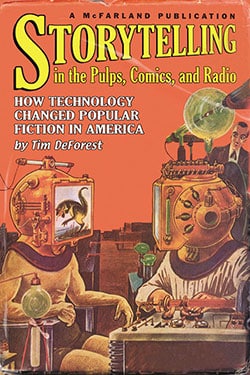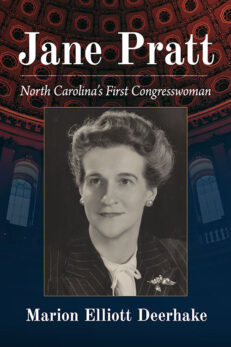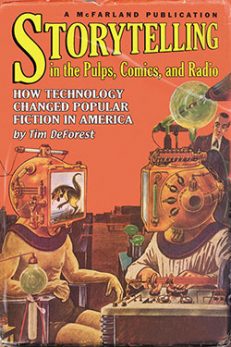Storytelling in the Pulps, Comics, and Radio
How Technology Changed Popular Fiction in America
$29.95
In stock
About the Book
The first half of the twentieth century was a golden age of American storytelling. Mailboxes burgeoned with pulp magazines, conveying an endless variety of fiction. Comic strips, with their ongoing dramatic storylines, were a staple of the papers, eagerly followed by millions of readers. Families gathered around the radio, anxious to hear the exploits of their favorite heroes and villains. Before the emergence of television as a dominant—and stifling—cultural force, storytelling blossomed in America as audiences and artists alike embraced new mediums of expression. This examination of storytelling in America during the first half of the twentieth century covers comics, radio, and pulp magazines. Each was bolstered by new or improved technologies and used unique attributes to tell dramatic stories. Sections of the book cover each medium. One appendix gives a timeline for developments relative to the subject, and another highlights particular episodes and story arcs that typify radio drama. Illustrations and a bibliography are included.
About the Author(s)
Bibliographic Details
Tim DeForest
Format: softcover (6 x 9)
Pages: 235
Bibliographic Info: photos, appendices, notes, bibliography, index
Copyright Date: 2004
pISBN: 978-0-7864-1902-9
Imprint: McFarland
Table of Contents
Preface 1
Introduction 3
PART I: THE PULPS 11
1. Story Papers 13
2. Dime Novels 15
3. Birth of the Pulps 26
4. The Western and Max Brand 30
5. Adventure: Pirates, Gladiators and Sudden Death for the Discerning Reader 37
6. Weird Tales: Things That Bump into You in the Night 44
7. The Hard-Boiled Detective 56
8. Amazing, Astounding Science Fiction 64
9. Edgar Rice Burroughs: Ape Men, Dinosaurs and Martians 77
10. Unpleasant Interlude 89
11. Shadows, Spiders and Flying Aces: The Single-Character Pulps 92
12. The Death of the Pulps 108
PART II: ADVENTURE COMIC STRIPS 109
13. The Early Years 111
14. Wash Tubbs: An Unlikely Adventurer 115
15. Dick Tracy: Cops in the Comics 122
16. From the Jungle to the Round Table 128
17. Milt Caniff: Fighter Pilots, Pretty Girls and the Dragon Lady 140
18. Assigning Blame 146
PART III: RADIO DRAMA AND ADVENTURE 148
19. Thundering Hoofbeats and Silver Bullets 150
20. As Inevitable as a Guilty Conscience: The Shadow on Radio 157
21. Orson Welles: Master Storyteller 162
22. Faster Than a Speeding Bullet: Superman 168
23. Frights for Smart People: Horror on Radio 173
24. Tired of the Everyday Routine? Suspense, Escape, Carlton Morse and The Scarlet Queen 178
25. Dramatizing Reality: Dragnet 189
26. The Law in Dodge City: Gunsmoke 193
27. From the Far Horizons: Science Fiction on Radio 197
28. The End of Radio 201
Appendix I: Timeline 205
Appendix II: Radio Favorites 208
Notes 213
Bibliography 221
Index 225
Book Reviews & Awards
- “Most entertaining…very perceptive…There’s a lot here, and it’s organized very well…a fine study”—Classic Images
- “Painstakingly, DeForest carries his readers down memory lane in a nostalgic tribute to a trio of abandoned story models after the inception of modern technology…his research appears authentic and sweeping and his writing style compelling…fascinating”—Radio Recall
- “Methods used to perform the task of storytelling are examined in detail…an interesting and highly informative read…recommend it highly”—Illustrated Press
- “Delightful…astounding compendium…impressive…captivating”—Science Fiction Studies
- “interesting and rewarding…lively tone…an interesting and insightful endeavor…anyone who loves pulps, comics, and especially radio—and anyone who appreciates the intrinsic value, both aesthetically and morally, in each medium—will treasure this work”—SPERDVAC Radiogram
- “An interesting study of the evolution of popular entertainment”—Critical Mass.





